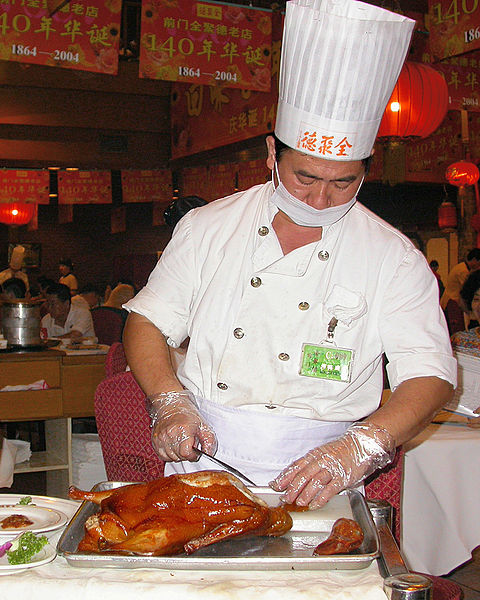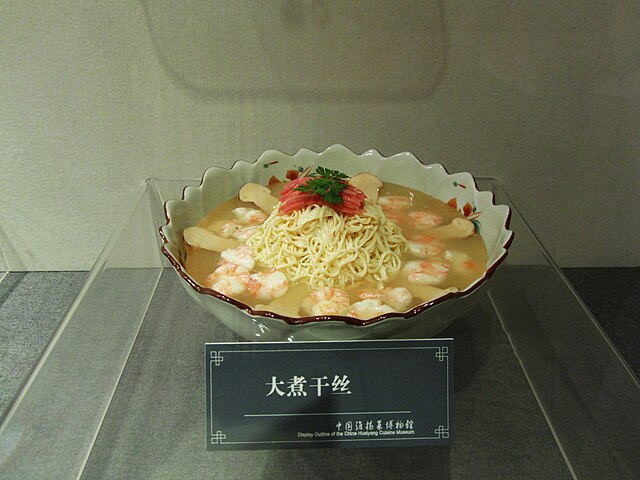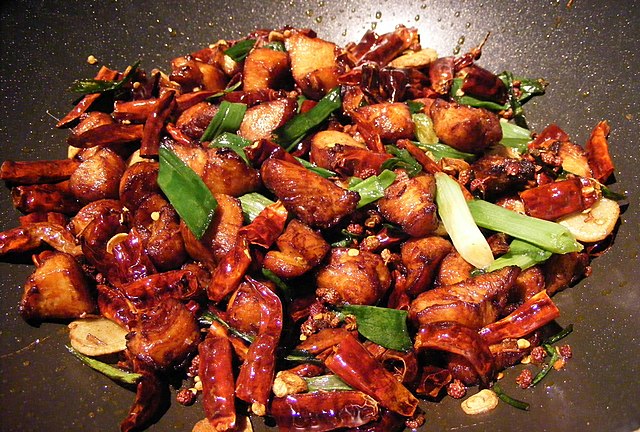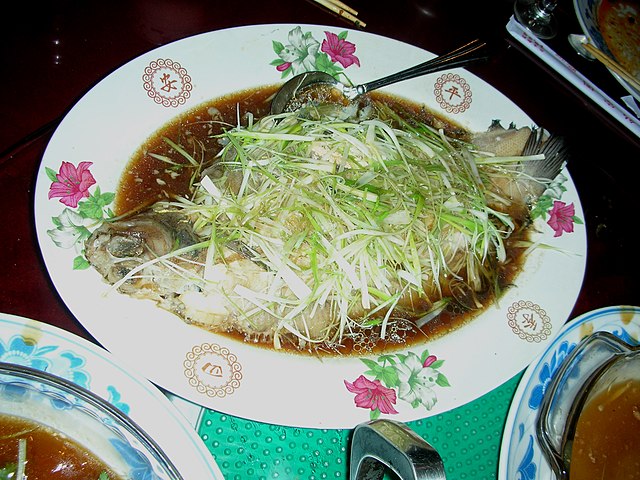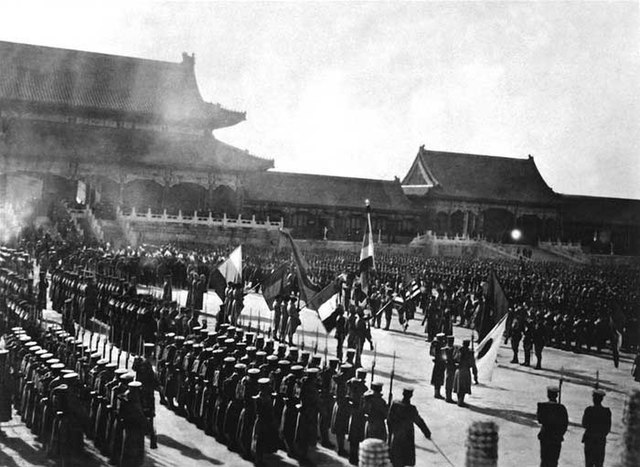Chinese cuisine comprises cuisines originating from China, as well as from Chinese people from other parts of the world. Because of the Chinese diaspora and historical power of the country, Chinese cuisine has profoundly influenced many other cuisines in Asia and beyond, with modifications made to cater to local palates. Chinese food staples such as rice, soy sauce, noodles, tea, chili oil, and tofu, and utensils such as chopsticks and the wok, can now be found worldwide.
A Quanjude cook is slicing Peking roast duck. Peking duck is eaten by rolling pieces of duck with scallion, cucumber and sweet bean sauce using steamed pancakes.
Dàzhǔ gānsī is a typical soup dish of Huaiyang cuisine. It is made of finely sliced dried tofu, chicken, ham and bamboo shoot, and the ingredients need to be braised with shrimp in chicken soup. It was highly praised by the Qianlong emperor.
Làzǐ Jī, stir-fried chicken with chili and Sichuan pepper in Sichuan style
Steamed whole perch with roe inside. Sliced ginger and spring onion is usually spread on top.
China, officially the People's Republic of China (PRC), is a country in East Asia. With a population exceeding 1.4 billion, it is the world's second-most populous country. China spans the equivalent of five time zones and borders fourteen countries by land. With an area of nearly 9.6 million square kilometers (3,700,000 sq mi), it is the third-largest country by total land area. The country is divided into 33 province-level divisions: 22 provinces, five autonomous regions, four municipalities, and two semi-autonomous special administrative regions. Beijing is the national capital, while Shanghai is its most populous city and largest financial center.
10,000-year-old pottery, Xianren Cave culture (18000–7000 BCE)
Yinxu, the ruins of the capital of the late Shang dynasty (14th century BCE)
China's first emperor, Qin Shi Huang, is famed for having united the Warring States' walls to form the Great Wall of China. Most of the present structure dates to the Ming dynasty
The Eight-Nation Alliance invaded China to defeat the anti-foreign Boxers and their Qing backers. The image shows a celebration ceremony inside the Chinese imperial palace, the Forbidden City after the signing of the Boxer Protocol in 1901.

